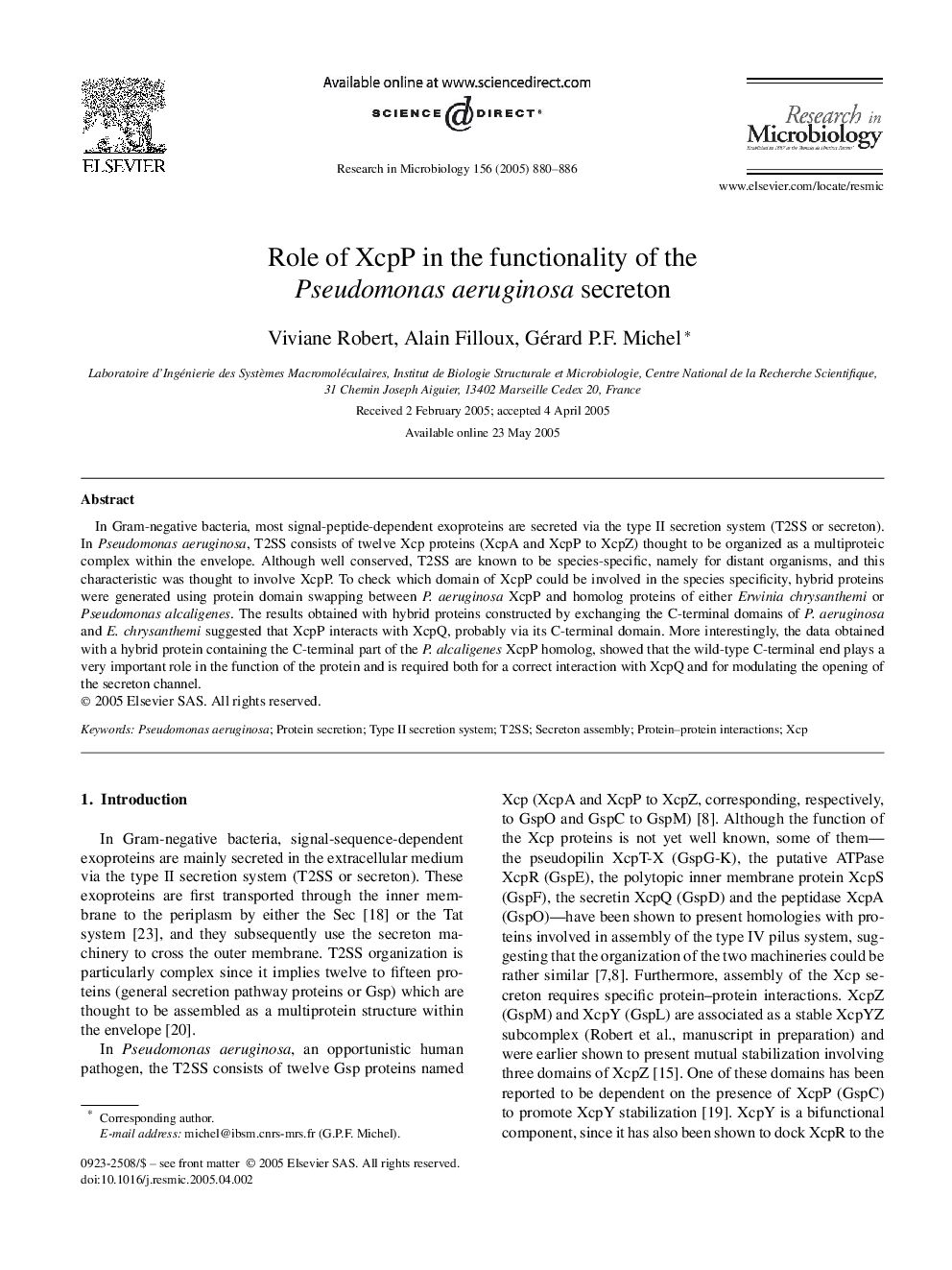| Article ID | Journal | Published Year | Pages | File Type |
|---|---|---|---|---|
| 9440094 | Research in Microbiology | 2005 | 7 Pages |
Abstract
In Gram-negative bacteria, most signal-peptide-dependent exoproteins are secreted via the type II secretion system (T2SS or secreton). In Pseudomonas aeruginosa, T2SS consists of twelve Xcp proteins (XcpA and XcpP to XcpZ) thought to be organized as a multiproteic complex within the envelope. Although well conserved, T2SS are known to be species-specific, namely for distant organisms, and this characteristic was thought to involve XcpP. To check which domain of XcpP could be involved in the species specificity, hybrid proteins were generated using protein domain swapping between P. aeruginosa XcpP and homolog proteins of either Erwinia chrysanthemi or Pseudomonas alcaligenes. The results obtained with hybrid proteins constructed by exchanging the C-terminal domains of P. aeruginosa and E. chrysanthemi suggested that XcpP interacts with XcpQ, probably via its C-terminal domain. More interestingly, the data obtained with a hybrid protein containing the C-terminal part of the P. alcaligenes XcpP homolog, showed that the wild-type C-terminal end plays a very important role in the function of the protein and is required both for a correct interaction with XcpQ and for modulating the opening of the secreton channel.
Keywords
Related Topics
Life Sciences
Immunology and Microbiology
Applied Microbiology and Biotechnology
Authors
Viviane Robert, Alain Filloux, Gérard P.F. Michel,
